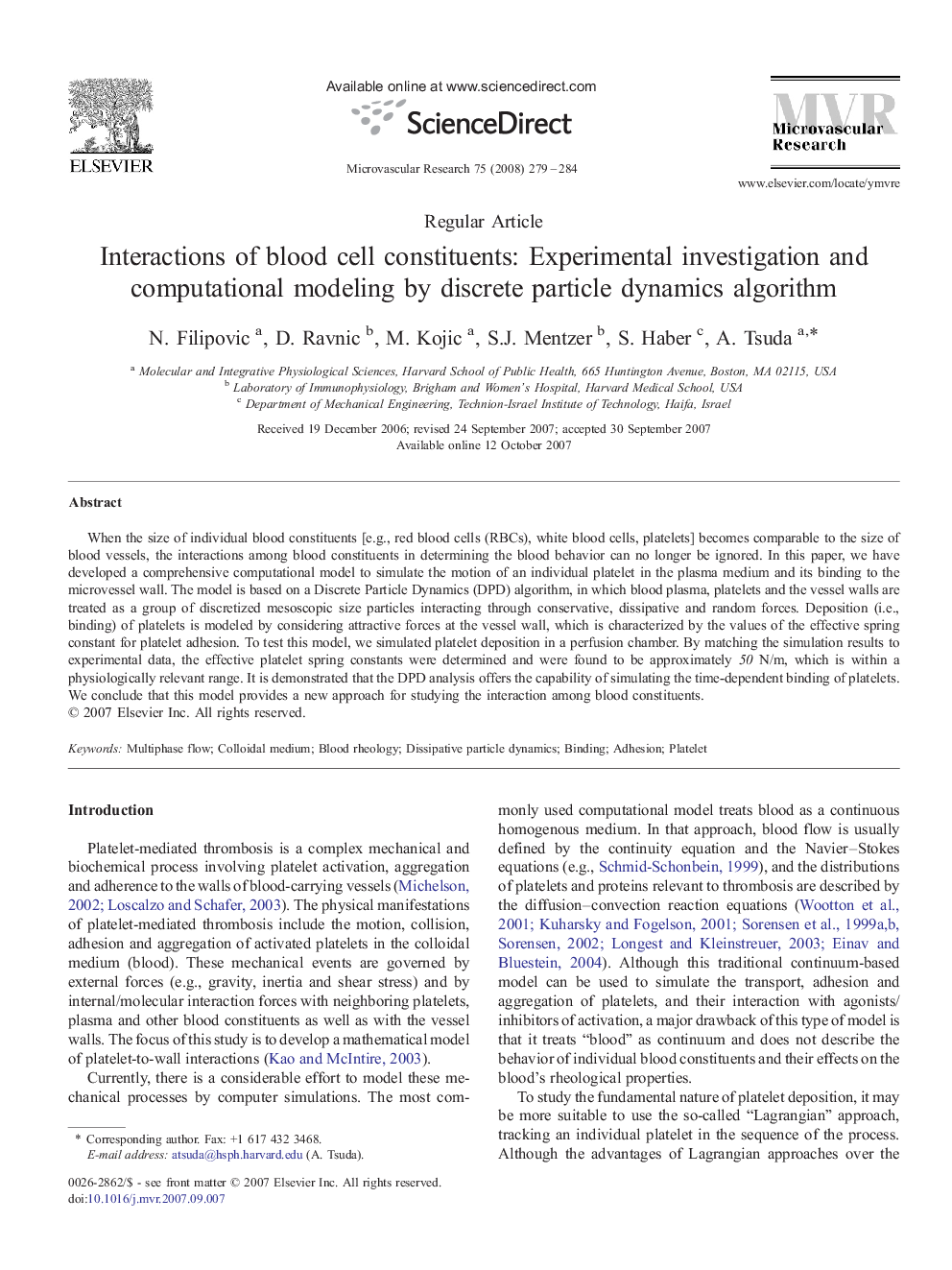| Article ID | Journal | Published Year | Pages | File Type |
|---|---|---|---|---|
| 1995201 | Microvascular Research | 2008 | 6 Pages |
When the size of individual blood constituents [e.g., red blood cells (RBCs), white blood cells, platelets] becomes comparable to the size of blood vessels, the interactions among blood constituents in determining the blood behavior can no longer be ignored. In this paper, we have developed a comprehensive computational model to simulate the motion of an individual platelet in the plasma medium and its binding to the microvessel wall. The model is based on a Discrete Particle Dynamics (DPD) algorithm, in which blood plasma, platelets and the vessel walls are treated as a group of discretized mesoscopic size particles interacting through conservative, dissipative and random forces. Deposition (i.e., binding) of platelets is modeled by considering attractive forces at the vessel wall, which is characterized by the values of the effective spring constant for platelet adhesion. To test this model, we simulated platelet deposition in a perfusion chamber. By matching the simulation results to experimental data, the effective platelet spring constants were determined and were found to be approximately 50 N/m, which is within a physiologically relevant range. It is demonstrated that the DPD analysis offers the capability of simulating the time-dependent binding of platelets. We conclude that this model provides a new approach for studying the interaction among blood constituents.
